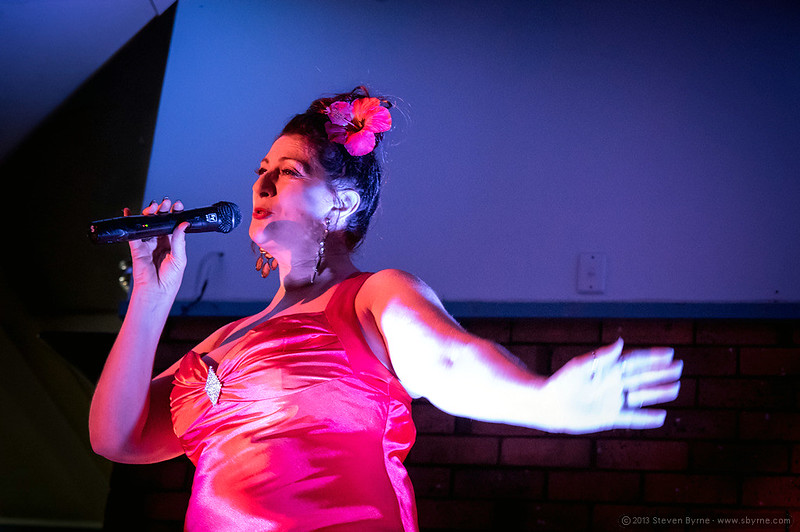 Originally posted by Nicolas06
Originally posted by Nicolas06 
When the light is good, some higher ISOs look okay....Noise destroy color deph, dynamic range and subtle tones.
This is of course all true. That's why all those well-lit studio test shots (like the Imaging Resource comparometer ones) reveal very little of real/visible ISO performance. Dimming the lights puts high ISO to the test.
But even dark, poorly lit scenes can render well under high ISO. It all depends on the scene. There are no hard and fast rules. Nice solid blacks and dark shadows can cause little visual problem for colour or noise, even at ISO 6400 on either the K-3 or the K-5 (pics below related). What becomes more important is whether you have any motion blur or missed focus, and get the white balance OK. If focus is good, even the highest ISO's can look decent, perhaps with appropriate post-processing using LR, DxO, C1, even PDCU.
K-3

Dee Dee Lavell opening
Tamron AF 17-50mm F2.8, ƒ/3.2, 50.0 mm, 1/125, ISO 6400
K-5
 Guitar and drums
Guitar and drums
PENTAX-FA 50mm F1.4, ƒ/1.6, 50.0 mm, 1/100, ISO 6400


 Similar Threads
Similar Threads 

















 Post #1 by sandilands
Post #1 by sandilands








